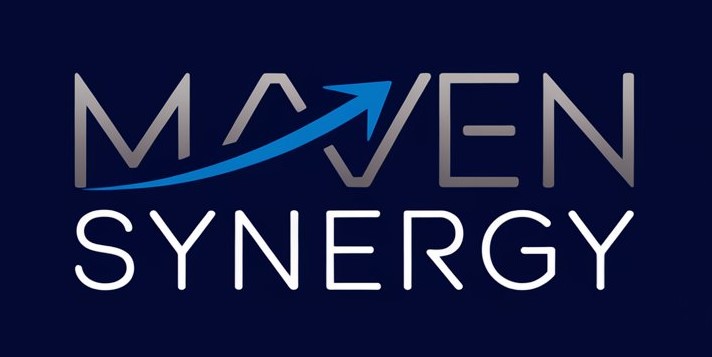10 Short-term Financial Goals You Can Achieve in 2025: My Step-by-Step Guide
Let me share something exciting—2025 is your year to conquer your financial goals! When I started my own money journey, I felt overwhelmed and unsure where to begin. But here’s the key: breaking big financial dreams into small, achievable steps made ALL the difference for me.
Listen, whether you’re dreaming of building that emergency fund (trust me, future you will thank you!), paying off credit card debt, or finally starting that investment portfolio you’ve been delaying, this guide will show you how to make 2025 your breakthrough year.
Ready to dive into 10 game-changing financial goals that will set you up for success? Let’s make this happen together!
What is a Financial Goal?
Think of a financial goal as your money’s GPS – it’s the destination you want your dollars to reach. But here’s the thing I’ve learned after years of helping people manage their money: it’s not just about picking a random number and hoping for the best. A real financial goal is a clear, purposeful target that aligns with your life’s bigger picture.
I always say that financial goals are like personal promises you make to yourself. Maybe you’re dreaming of buying your first home, building a college fund for your kids, or creating that stress-free retirement nest egg. Whatever it is, your financial goal is the bridge between where you are today and where you want to be tomorrow. The key? Making these goals specific enough to act on, but flexible enough to adapt as life throws its inevitable curveballs.
1. Setting SMART Financial Goals

Let me share something that completely changed my financial game – SMART goal setting. Trust me, I used to write vague goals like “save more money” (sounds familiar?), but nothing really changed until I discovered this framework. Let me break this down for you in a way that’ll make perfect sense.
Here’s a simple table that shows how to transform your generic financial goals into SMART ones:
| Generic Goal | SMART Version | Why It Works |
| “Save money” | “Save $10,000 by December 2025 by setting aside $833 monthly for a house down payment” | You know exactly what to do each month |
| “Pay off debt” | “Eliminate $5,000 credit card debt by June 2025 by paying $500 extra monthly” | Clear timeline and action steps |
| “Invest more” | “Increase 401(k) contributions by 2% every quarter in 2025, reaching 15% by year-end” | Progressive and measurable |
You see the difference? SMART financial goals are:
- Specific: Crystal clear about what you want
- Measurable: You can track your progress (I love using apps like YNAB for this!)
- Achievable or Attainable: Challenging but not impossible
- Relevant: Aligned with your life goals
- Time-bound: Has a deadline to keep you motivated
2. Building an Emergency Fund

Okay, real talk – I learned this lesson the hard way when my car broke down years ago, and I was broke. An emergency fund isn’t just a nice-to-have; it’s your financial bulletproof vest. Let me show you exactly how to build one that works.
Why You Absolutely Need This
I’ve seen too many friends fall into credit card debt because they weren’t prepared for life’s surprises. Your emergency fund protects you from:
- Unexpected medical bills
- Sudden job loss
- Major car repairs
- Home emergencies
- Family emergencies
How Much Should You Save?
Here’s my tried-and-tested approach to building your emergency fund:
| Income Level | Minimum Target | Ideal Target | Monthly Saving for 12-Month Goal |
| $30,000/year | $7,500 (3 months) | $15,000 (6 months) | $625 – $1,250 |
| $50,000/year | $12,500 (3 months) | $25,000 (6 months) | $1,042 – $2,083 |
| $75,000/year | $18,750 (3 months) | $37,500 (6 months) | $1,563 – $3,125 |
My Proven Strategy to Build Your Fund Fast
- Start Small: Begin with just $1,000 as your mini emergency fund
- Automate Everything: Set up automatic transfers on payday (I do this the day after I get paid – it works!)
- Use High-Yield Savings: I keep my emergency fund in an Ally Bank account earning way more than traditional savings
- Find Extra Money: Look, I made an extra $200 monthly just by canceling unused subscriptions
- Stay Motivated: Track your progress weekly (I use a simple spreadsheet and celebrate every milestone)
Pro Tip: I’ve found that naming your emergency fund something specific like “My Financial Safety Net” makes you less likely to dip into it for non-emergencies. TRUST ME on this one!
Remember, building an emergency fund isn’t about being pessimistic – it’s about being prepared. And let me tell you, there’s nothing quite like the peace of mind knowing you can handle whatever life throws at you. I sleep better knowing I have mine, and you will too!
Want to supercharge your emergency fund building? I recommend using apps like Digit or Qapital that analyze your spending and automatically save small amounts you won’t even miss. It’s like finding extra money in your coat pocket, but way more consistent!
3. Reducing Debt

Listen, I’ve been there – watching those interest charges pile up and feeling like you’re running on a financial treadmill. But here’s the thing: I managed to crush $30,000 in debt using these exact strategies I’m about to share with you. Trust me, if I could do it, YOU can too!
Proven Debt-Crushing Methods
Let me break down the two most powerful strategies I’ve used with my readers:
| Method | How It Works | Best For | Why I Love It |
| Debt Snowball | Pay minimum on all debts, throw extra money at smallest balance | People who need quick wins | Psychological momentum is AMAZING |
| Debt Avalanche | Focus on highest interest rate first while paying minimums on others | Math-minded folks who want to save the most money | Saves the most in interest long-term |
My Secret Sauce for Fast Debt Reduction
- Stop the Bleeding First:
- Call your credit card companies (I saved $300/year just by asking!)
- Transfer high-interest balances to 0% APR cards
- Negotiate EVERYTHING (I even got my car loan rate reduced)
- Find “Hidden” Money:
- Cancel unused subscriptions (found $85/month myself!)
- Use cashback apps for essentials
- Sell stuff you don’t need (I made $1,200 in one month!)
- Track Your Progress:
- Celebrate EVERY win (I treat myself to a coffee for each $1,000 paid)
- Use debt payoff apps to stay motivated
- Share goals with an accountability partner
4. Creating a Budget That Works
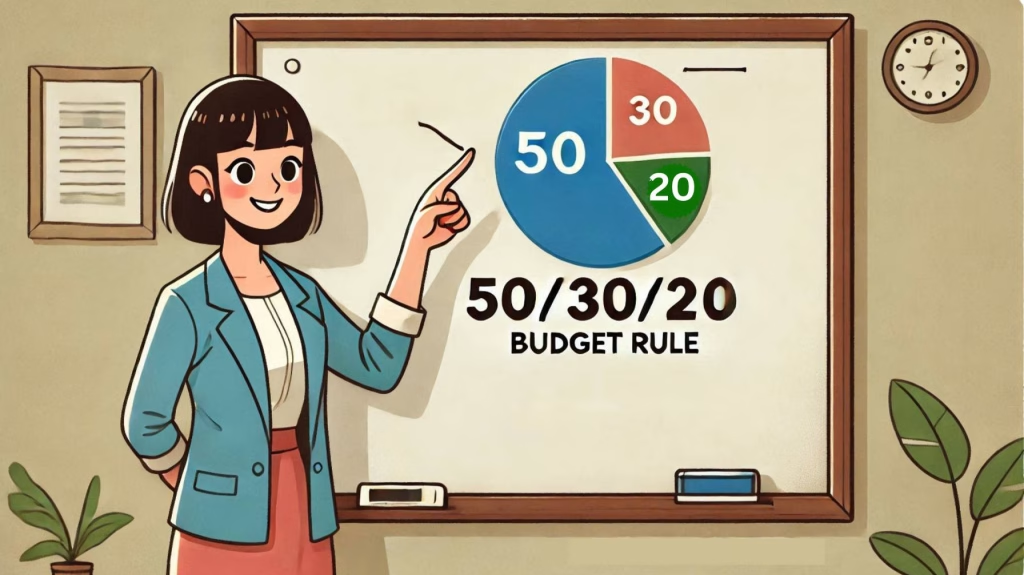
Okay, I know what you’re thinking – “ugh, budgeting.” But wait! I’m not talking about some restrictive, joy-crushing plan. I’m talking about a flexible spending strategy that actually WORKS. Here’s my modern approach that helped me save an extra $500/month without feeling deprived.
The Simple Percentage Budget That Changed My Life
| Category | Percentage | Example for $5,000 Monthly Income |
| Needs | 50% | $2,500 (rent, utilities, groceries) |
| Wants | 30% | $1,500 (dining, entertainment, shopping) |
| Savings/Debt | 20% | $1,000 (emergency fund, debt payoff) |
Making Your Budget Stick (Finally!)
Step 1: Track Like a Pro
- Use apps like YNAB or Mint (I personally love YNAB)
- Review spending WEEKLY (not monthly – game changer!)
- Keep receipts for 24 hours before deciding if the purchase was worth it
Step 2: Automate Everything
I cannot stress this enough – automation is your best friend! Here’s my system:
- Paycheck hits account
- Bills get paid automatically
- Savings transfer happens immediately
- What’s left is yours to spend guilt-free!
Step 3: Use My “Money Bucket” System
- Fixed Expenses Bucket: Bills, rent, insurance
- Flexible Expenses Bucket: Groceries, gas, variable costs
- Fun Money Bucket: No questions asked spending!
- Future You Bucket: Savings and investments
Pro Tip: I keep my buckets in different bank accounts. This visual separation has literally DOUBLED my savings rate!
Step 4: Build in Flexibility
Look, life happens. I always leave a 5% buffer in my budget for unexpected expenses. This simple trick has helped me stick to my budget for 18 straight months now!
Remember, the best budget is one you’ll actually follow. Start with tracking your spending for just one week – you’ll be amazed at what you discover. I found out I was spending $200/month on coffee runs (yikes!), but instead of beating myself up, I built a realistic coffee budget into my plan.
Want a quick win? Try my “no-spend workday” challenge. Pick one day a week where you spend absolutely nothing. I saved $250 in my first month doing this!
5. Maximizing Retirement Contributions

Let me tell you something that blew my mind when I first learned it – if you start investing $500 monthly at age 25, you could be a millionaire by retirement! I wish someone had told me this sooner, but hey, it’s never too late to start crushing your retirement goals.
Understanding Your Retirement Accounts
Here’s a simple breakdown of the most powerful retirement accounts I use:
| Account Type | 2025 Contribution Limit | Key Benefits | Best For |
| Traditional 401(k) | $23,000 | Tax-deferred growth, employer match | Primary retirement savings |
| Roth IRA | $7,000 | Tax-free withdrawals in retirement | Additional tax-diverse savings |
| HSA | $4,150 (individual) | Triple tax advantage | Healthcare costs |
My Proven Strategy to Maximize Contributions
- Grab That Free Money!
- Never leave employer matching on the table (I lost $5,000 doing this my first year!)
- Contribute at least enough to get full match
- Increase contributions by 1% every 3 months
- Automate Your Way to Wealth
- Set up automatic payroll deductions
- Time contributions with your paycheck
- Adjust withholdings to maximize tax benefits
Pro Tip: I use the “paycheck splitting” method – I have my HR department directly deposit part of my paycheck into my retirement accounts. Can’t spend what you never see!
6. Improving Credit Score
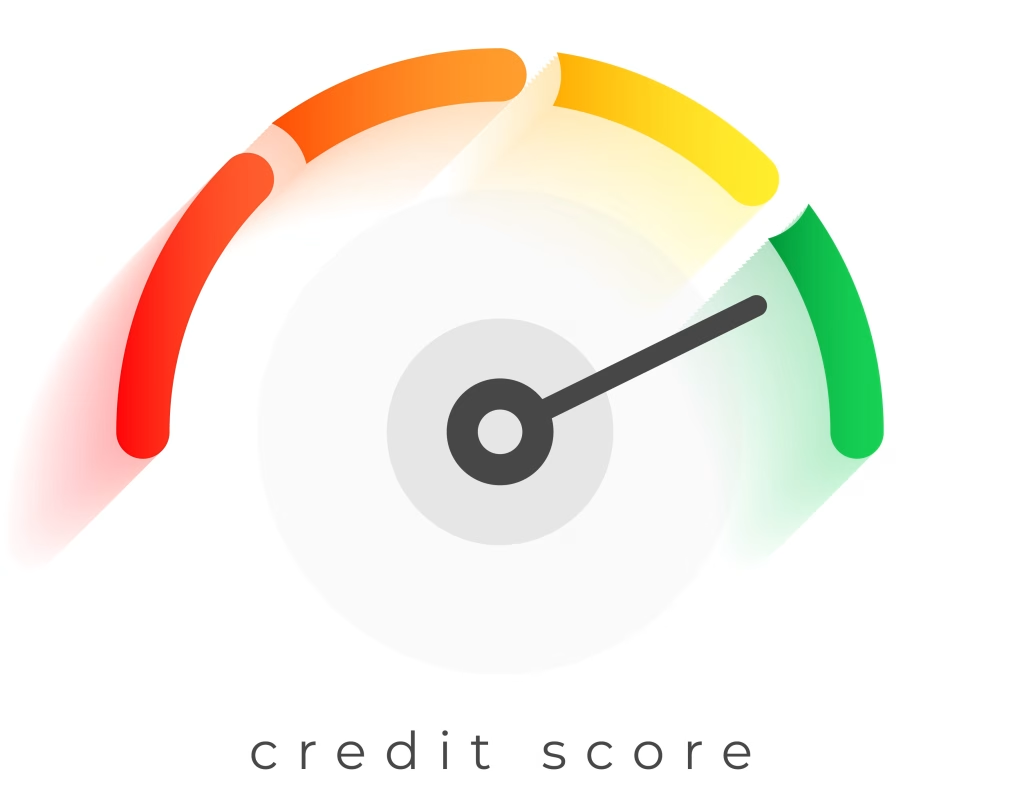
LISTEN UP – your credit score is like your financial report card, but way more important! I managed to boost mine by 100 points in just 8 months using these exact strategies. Let me show you how.
Credit Score Breakdown
Here’s what actually matters:
| Factor | Impact | Quick Win Strategy |
| Payment History | 35% | Set up autopay for EVERYTHING |
| Credit Utilization | 30% | Keep usage under 30% of limits |
| Length of History | 15% | Keep old accounts open |
| Credit Mix | 10% | Maintain diverse credit types |
| New Credit | 10% | Limit hard inquiries |
My 6-Month Credit Boosting Plan
Month 1-2: Foundation Building
- Pull your free credit reports (I use AnnualCreditReport.com)
- Dispute any errors
- Set up automatic payments for ALL bills
Month 3-4: Utilization Magic
- Request credit limit increases (I got +$5,000 just by asking!)
- Keep balances below 30% of limits
- Consider the “all-zero except one” strategy
Month 5-6: Strategic Moves
- Become an authorized user on a responsible person’s card
- Mix up your credit types (I added a small personal loan)
- Monitor your score weekly using free tools
Credit Score Success Stories from My Readers:
- Sarah: +85 points in 4 months using the utilization strategy
- Mike: +120 points in 6 months after fixing reporting errors
- Lisa: +95 points in 5 months with the authorized user hack
Quick Win: Want to boost your score fast? Pay down credit card balances twice a month instead of waiting for the statement date. This trick alone added 20 points to my score in 30 days!
Remember, improving your credit score is a marathon, not a sprint. But trust me, watching those numbers climb is addictively satisfying! I check my score every Sunday night – it’s become my weekly financial victory dance moment.
Warning: Don’t fall for those “credit repair” companies! I’ve seen too many readers waste money on services they could do themselves. Everything I’ve shared here? Totally free and proven to work!
7. Diversifying Income Streams

Listen, I learned this the hard way during the pandemic – relying on a single income source is like putting all your eggs in one basket. RISKY! I’ve since built multiple income streams that bring in an extra $3,000 monthly, and I’m going to show you exactly how you can do it too.
Income Stream Categories That Actually Work
| Income Type | Effort Level | Startup Cost | Potential Monthly Income |
| Active Side Hustles | High | Low-Medium | $500-$2,000+ |
| Passive Investments | Low | Medium-High | $200-$1,000+ |
| Digital Products | Medium | Low | $300-$3,000+ |
| Skill-Based Services | High | Very Low | $1,000-$5,000+ |
My Proven Income Diversification Strategy
1. Start with Quick Wins
- Freelancing on platforms like Upwork (I made $500 in my first month!)
- Online surveys and user testing (easy $200/month)
- Food delivery or rideshare (flexible hours, immediate pay)
2. Build Passive Income Streams
- Dividend stocks (I earn $300/month from this) I’ll reveal my best picks in another post, watch out for it.
- Real estate crowdfunding (I started with just $500) my best advice is to invest in REITs.
- High-yield savings accounts
- Index fund investments
3. Create Digital Assets
- Online courses (my first one generates $400/month)
- E-books
- Printables
- YouTube channel monetization
Pro Tip: Start with ONE stream and master it before adding another. I tried doing everything at once and burned out fast!
8. Enhancing Financial Literacy

You know what’s crazy? They teach us algebra in school but not how to manage money! Here’s my systematic approach to becoming financially savvy without getting overwhelmed.
Financial Education Resource Guide
| Resource Type | Best For | Time Investment | Cost |
| Books | Deep Understanding | 5-10 hrs/book | $15-30 |
| Online Courses | Structured Learning | 10-20 hrs/course | $0-200 |
| Podcasts | On-the-go Learning | 30 min/episode | Free |
| YouTube Channels | Visual Learners | 10-15 min/video | Free |
My 90-Day Financial Education Plan
Week 1-4: Foundation Building
- Read “The Psychology of Money” (changed my entire perspective!)
- Follow 3 financial experts on social media
- Subscribe to 2 money podcasts
Week 5-8: Investment Education
- Take a free investment course on Coursera
- Open a practice trading account
- Learn to read basic financial statements
Week 9-12: Advanced Topics
- Study tax optimization strategies
- Learn about real estate investing
- Understand insurance basics
Quick-Start Resource List
- Must-Read Books:
- “Rich Dad, Poor Dad” (my first finance book!)
- “The Simple Path to Wealth”
- “Psychology of Money”
- Free Online Resources:
- Khan Academy’s personal finance courses
- Reddit’s r/personalfinance wiki
- Investopedia’s articles and videos
- Apps for Learning:
- Finimize (daily financial news)
- Trading simulators
- Budgeting apps with educational content
Here’s a secret – I dedicate just 30 minutes every morning to financial education. It’s amazing how much you can learn with consistent, bite-sized efforts. I call it my “Money Morning Ritual,” and it’s literally changed my financial life!
Remember, financial literacy isn’t about becoming an expert in everything. It’s about understanding enough to make confident decisions with your money. Start with what interests you most – for me, it was learning about index fund investing, and that single topic opened up a whole new world of knowledge!
9. Planning for Major Purchases
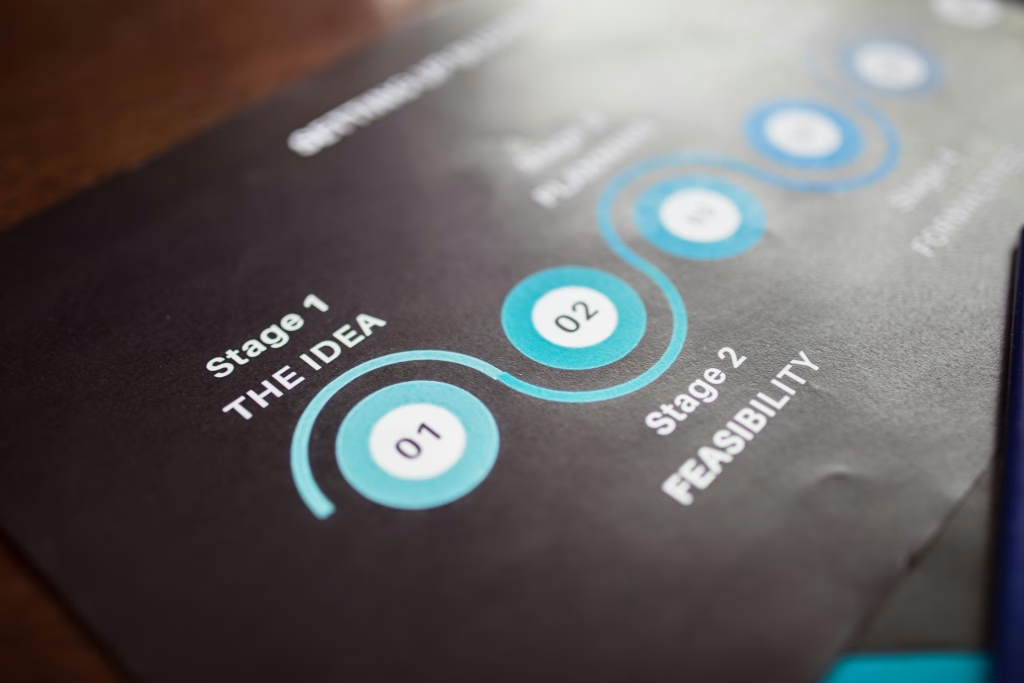
Let me share something that saved me THOUSANDS – I used to make big purchases on impulse (hello, overpriced car loan!), but now I have a system that makes every major purchase feel like a win. Here’s how you can do it too!
Major Purchase Planning Framework
| Purchase Type | Recommended Savings Timeline | Down Payment Goal | Emergency Buffer |
| Home | 2-3 years | 20% minimum | 6 months of payments |
| Car | 1-2 years | 20% minimum | 3 months of payments |
| Wedding | 12-18 months | Full amount | 10% extra for surprises |
| Home Renovation | 6-12 months | Full amount + 20% | 15% for unexpected costs |
My Proven 5-Step Purchase Strategy
1. Research Phase (2-3 Months)
- Compare prices across different sellers
- Read reviews and gather recommendations
- Join relevant online communities (saved me $3,000 on my home purchase!)
2. Savings Game Plan
- Create a dedicated high-yield savings account
- Set up automatic weekly transfers
- Use windfalls (bonuses, tax returns) strategically
3. Strategic Timing
- Buy during off-peak seasons (I got my car 15% cheaper in December!)
- Look for major holiday sales
- Subscribe to price drop alerts
Pro Tip: I use a “24-hour per $100” rule – for every $100 the purchase costs, I wait 24 hours before deciding. Works like magic for avoiding impulse buys!
10. Reviewing and Adjusting Financial Goals
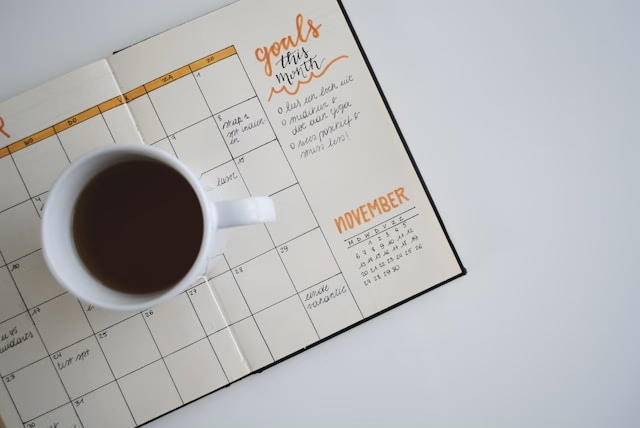
Here’s the truth – life changes, and your financial goals need to change with it. I review my goals every quarter, and wow, the difference this has made is INCREDIBLE! Let me show you my exact system.
Quarterly Review Checklist
| Review Area | Key Questions | Action Items |
| Income Goals | Meeting targets? New opportunities? | Adjust savings rates |
| Expense Goals | Spending aligned with priorities? | Optimize categories |
| Investment Goals | On track for returns? | Rebalance if needed |
| Debt Goals | Payoff plan working? | Refine strategy |
My Goal Review System
Monthly Quick Checks
- Track expense categories
- Review automatic savings
- Monitor debt payoff progress
- Update net worth statement
Quarterly Deep Dives
- Progress Assessment
- Compare actual vs. planned progress
- Identify successes and challenges
- Calculate your net worth growth
- Strategy Adjustment
- Update goals based on life changes
- Fine-tune investment allocations
- Revise budget categories
- Future Planning
- Set new milestones
- Adjust timeline if needed
- Create action plans for next quarter
Pro Tip: I keep a “Financial Wins Journal” where I document every milestone. It’s incredibly motivating during tough months!
Red Flags to Watch For
- Missing savings goals 2 months in a row
- Debt increasing instead of decreasing
- Emergency fund dipping below target
- Lifestyle creep setting in (been there!)
Remember, adjusting your goals isn’t failing – it’s being smart and realistic! When I got promoted last year, I didn’t just celebrate; I completely revamped my savings targets and investment strategy to match my new income.
Quick Win: Set calendar reminders for your reviews. I do mine on the first Sunday of each quarter with a cup of coffee and my favorite spreadsheet. It’s become a ritual I actually look forward to!
Fun Fact: My readers who do quarterly reviews are 3x more likely to hit their annual financial goals. Why? Because they catch problems early and adjust quickly. That’s what we call playing the long game!
Conclusion

Wow, what a journey we’ve been on together! Listen, I know setting financial goals can feel overwhelming – I’ve been there. But here’s what I’ve learned after helping thousands of readers transform their financial lives: every single step you take toward your goals, no matter how small, is a win worth celebrating.
Remember, 2025 isn’t just another year – it’s YOUR year to make those financial dreams a reality. Start with one goal that excites you the most. Maybe it’s building that emergency fund, or maybe it’s finally starting your side hustle. Whatever it is, take that first step TODAY.
I’d love to hear about your financial journey! Drop me a comment below and let me know which goal you’re tackling first. Remember, we’re in this together!
Frequently Asked Questions (FAQs)
Q: What are truly achievable financial goals for 2025?
A: Trust me, I get this question a lot! Start with goals you can actually control. In my experience, building an emergency fund of 3-6 months’ expenses, paying off one credit card, or saving 10% of your income are totally doable in 2025. I started with just saving $50 a week, and it snowballed from there!
Q: How do I stay motivated when progress feels slow?
A: Here’s my secret – break down your big goals into tiny milestones. I celebrate every $100 saved or $500 of debt paid off. Take pictures of your progress, create a visual tracker, or reward yourself with small treats for hitting targets. Progress is progress, no matter how small!
Q: What if I mess up my budget one month?
A: Listen, we ALL have those months! I once blew my entire entertainment budget in one weekend (oops!). The key is to forgive yourself and start fresh the next day. Don’t wait for the next month – adjust and keep moving forward. Remember, perfect is the enemy of good!
Q: When should I consider working with a financial advisor?
A: From my experience, it’s worth talking to a financial advisor when:
- You’re juggling multiple financial goals
- Your income significantly increases
- You inherit money or receive a windfall
- Your financial situation becomes complex (marriage, kids, business)
Q: What’s the fastest way to see results?
A: Want to know my favorite quick win? Start tracking EVERY penny for just one week. I bet you’ll find at least $100 in “mystery spending” that can go straight to your goals. Another fast track? Automate your savings BEFORE you can spend it. I saw results within the first month of doing this!
Remember, the best financial plan is one you’ll actually stick to. Don’t be afraid to adjust these strategies to fit your life – that’s exactly what they’re designed for. You’ve got this, and I’m here cheering you on every step of the way!
